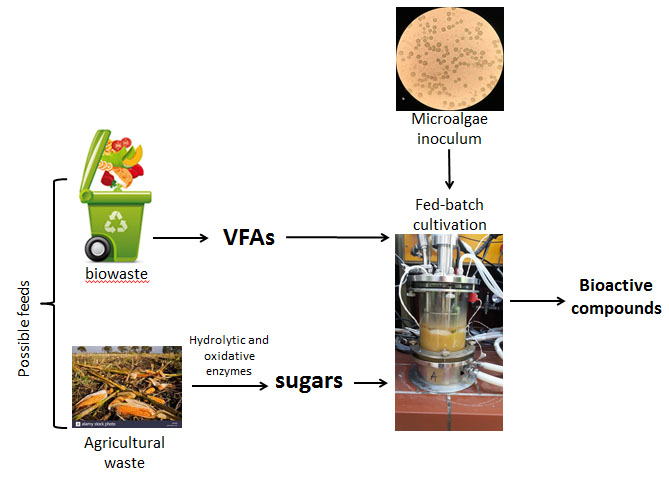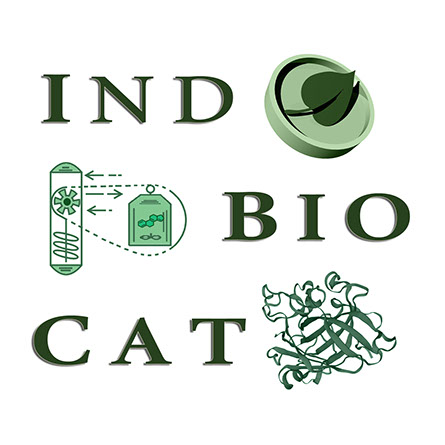
Utilization of biowaste and lignocellulosic biomass for the production of high added-value products from microalgae
Microalgae are types of microorganisms found in marine or freshwater environment that are able to grow autotrophically, utilizing the solar energy and the carbon dioxide, or heterotrophically, consuming an organic carbon source. The versatility that characterizes their growth modes allows the cultivation of microalgae on various organic substrates such as glucose, ethanol, organic acids etc.
The high scale production of microalgae is a developing research topic of biotechnology due to the high variety of useful metabolites with industrial application potentials. Such metabolites are for example lipids, carotenoids, carbohydrates, as well as the algal biomass rich in nutritional value. The main disadvantage of the process, however, is the low biomass productivity.
In order for their cultivation to become sustainable, it is necessary to grow microalgae on alternative carbon sources that do not add in the cost of the whole process. Therefore, the idea of utilizing waste derived carbon substrates seems a very attractive solution. More specifically, we are investigating the ability of microalgae to grow on volatile fatty acids (VFA), derived from the dark fermentation of biowaste, or on glucose from the enzymatic hydrolysis of lignocellulosic biomass, produced as a waste of the agricultural industry. VFA are a main side stream of the dark fermentation process and act as pollutants for the environment. On the other hand lignocellulosic biomass is a typical waste of the agroindustrial sector, not only in Greece but all over the world. The algal metabolites examined in our group are mainly fatty acids and carotenoids.

